Table of Contents[Hide][Show]

For those of us lucky enough to have grown up by the sea, favorite pastimes included digging for clams (aka clamming). The only thing better than the adventure of finding these gems was enjoying them afterwards in a multitude of ways – either simply steamed or as part of a savory clam chowder or clam bake. They were so delicious, you could say we were all “clamoring” for more even if we didn’t realize that this shellfish was extremely nutritious too (bonus!).
There are currently over 9,000 known living species of bivalves throughout the world!
Shellfish is a general term used to describe aquatic invertebrates with exoskeletons consumed as food, which basically means animals without backbones that live in the water and have some type of shell (even though they are not actually fish!). Bivalves are shellfish with a hinged two-part shell (called valves) found both in saltwater and freshwater environments and living everywhere from the tropics to the freezing Arctic. They’re incredibly ancient creatures, first appearing in the fossil record more than 500 million years ago! There are currently over 9,000 known living species of bivalves throughout the world, though humans only cultivate and routinely eat a small portion of those, including popular foods such as clams, mussels, and oysters.
Clams don’t have a brain but contain a digestive system, heart and circulatory system.
The term clam refers to several kinds of burrowing edible bivalves that live halfway buried in the sand or mud in both saltwater and freshwater. They have two shells of equal size connected by a hinge joint and a powerful retractable burrowing foot which helps keep them in place but also allows them to move around. Clams don’t have a brain but contain a digestive system, heart and circulatory system and can clamp their shell with vice-like firmness. There are over 15,000 clam species worldwide with the greatest diversity found in North America. They can live from 6 months to over 500 years and can range in size from tiny to a whopping four feet long and 440 pounds in the case of the aptly named “giant clam” found among the tropical coral reefs in the Indian and Pacific oceans – the largest bivalve mollusk. Clams have been consumed as part of the human diet for thousands of years as evidenced by middens (piles of ancient shell remains) full of clam shells found in Great Britain and on the west coast of the United States where they were enjoyed by Indigenous peoples as food, while their shells were used to make jewelry and as money.
Clams are great for the environment, acting as natural water purifiers.
Clams are also great for the environment. Since they are filter feeders, they are amazing natural water purifiers – in fact a small clam can filter up to 4.5 gallons (17 L) of water per day! They help remove toxic algae and by clearing up the water they also help increase light exposure for photosynthetic organisms. There are a variety of edible clams differing in shape, size, color, and flavor including hard-shell, soft-shell (no, the shells are not edible!), razor clams, surf clams, geoducks, manila clams and quahog (large, rounded, hard-shelled clam) just to name a few! With so many varieties and so many ways to enjoy this seafood, adding it to your diet will have you feeling as happy as a, well, clam!
Learn What Foods to *ADD* to Your Diet
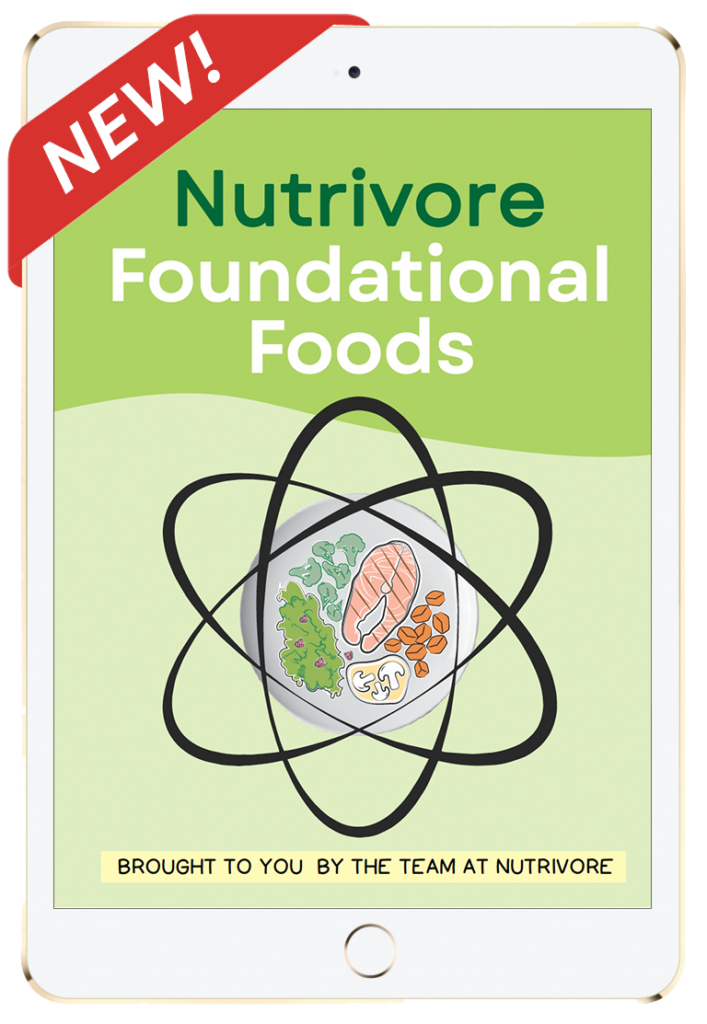
Nutrivore Foundational Foods
Learn what makes the 12 Nutrivore foundational food families nutritionally unique, their health benefits, which options are the most nutrient dense, how much of them to eat, plus various fun facts, practical pointers, and busting of common myths.
This very helpful resource will introduce you to new foods and expand your nutrition knowledge, making food choices easier!
Buy now for instant digital access.
Nutrivore Score for Clams – 1046
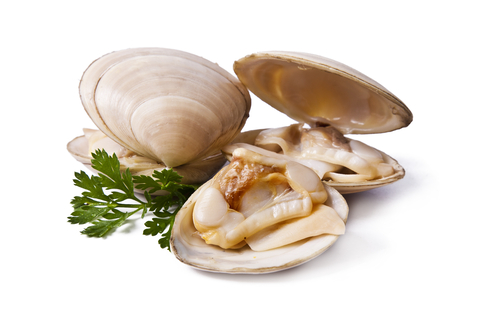
Clams have a Nutrivore Score of 1046, making them a super nutrient-dense food! Plus, they are a low-carb food; clams have just 4.1 grams of net carbs per 115 gram serving.
Per serving, clams are a best source (>50% daily value) of iodine, selenium, taurine, vitamin B7 (biotin), and vitamin B12 (cobalamin); an excellent source (20-50% daily value) of EPA+DHA and protein; and a good source (10-20% daily value) of choline, coQ10, iron, phosphorus, vitamin A, and vitamin E.
Ditch Diets. Embrace Nutrients. Start with this FREE Guide.
Sign up for the free Nutrivore Newsletter, your weekly, science-backed guide to improving health through nutrient-rich foods — without dieting harder —and get the Beginner’s Guide to Nutrivore delivered straight to your inbox!

Clam Nutrition Facts
One serving of clams is standardized to 115 grams (4 ounces). To put this in perspective: one serving of clams is roughly equivalent to 8 medium-sized clams. When you cook clams, they reduce in volume by approximately 40%: 100 grams of raw clams is roughly equivalent to 58 grams of cooked clams.
Clam Nutrition Facts Per Serving
| Clams, raw | Nutrivore Score: 1046 | Nutrient Density: Super! |
|---|---|---|
| Serving Size: 4 ounces (115 grams) | Protein: 16.9 grams | Net Carbohydrates: 4.1 grams |
| Calories: 99 | Total Fat: 1.1 grams | Dietary Fiber: 0.0 grams |
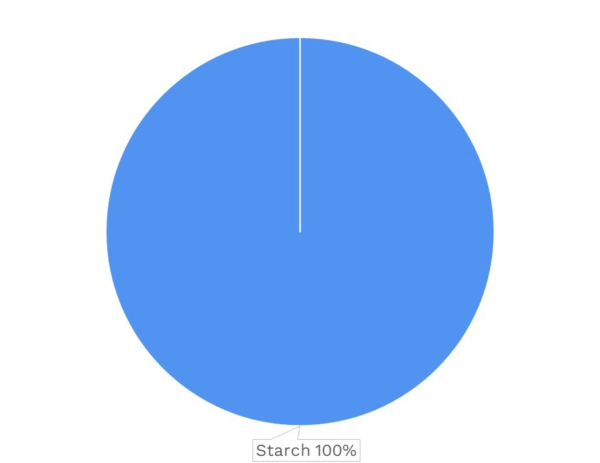
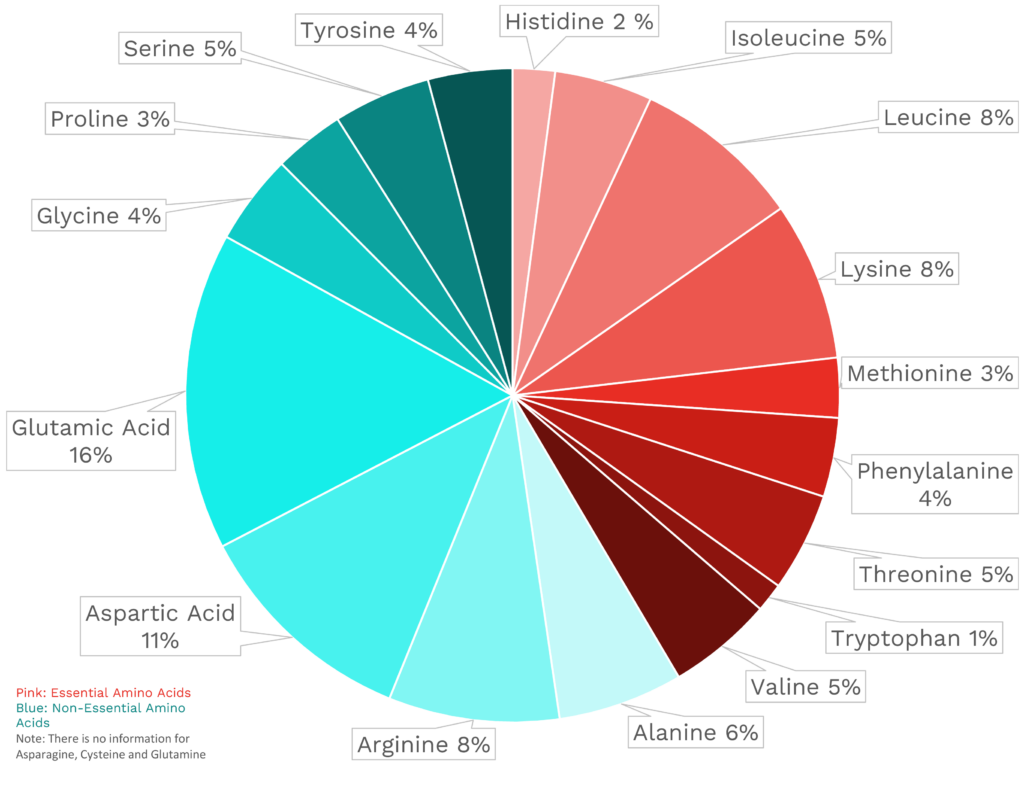
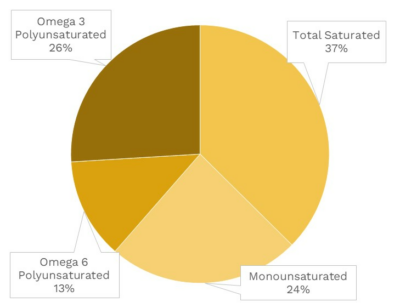
| VITAMINS | ||
|---|---|---|
| Vitamin A | 103.5 μg RAE | 12% DV |
| Vitamin B1 (Thiamin) | 17.3 μg | 1% DV |
| Vitamin B2 (Riboflavin) | 46.0 μg | 4% DV |
| Vitamin B3 (Niacin) | 0.4 mg | 3% DV |
| Vitamin B5 (Pantothenic Acid) | 0.2 mg | 3% DV |
| Vitamin B6 (Pyridoxine) | 11.5 μg | 1% DV |
| Vitamin B7 (Biotin) | 26.1 μg | 87% DV |
| Vitamin B9 (Folate) | 5.8 μg | 1% DV |
| Vitamin B12 (Cobalamin) | 13.0 μg | 541% DV |
| Vitamin C | 0.0 mg | 0% DV |
| Vitamin D (D2 + D3) | 0.0 μg | 0% DV |
| Vitamin E | 2.3 mg | 15% DV |
| Vitamin K | 0.2 μg | 0% DV |
| Choline | 74.8 mg | 14% DV |
| Myo-Inositol | 3.5 mg | ~ |
| CoQ10 | 1.1 mg | ~ |
| FUNCTIONAL FATS | ||
|---|---|---|
| MUFA | 0.1 g | 1% DV |
| ALA | 17.3 mg | 1% DV |
| EPA + DHA | 123.1 mg | 49% DV |
| CLA | 16.1 mg | ~ |
| Linoleic Acid | 0.0 g | 0% DV |
| MCT’s | 0.0 g | ~ |
| MINERALS | ||
|---|---|---|
| Calcium | 44.9 mg | 3% DV |
| Copper | 61.0 μg | 7% DV |
| Iodine | 180.6 μg | 120% DV |
| Iron | 1.9 mg | 10% DV |
| Magnesium | 21.9 mg | 5% DV |
| Manganese | 97.8 μg | 4% DV |
| Phosphorus | 227.7 mg | 18% DV |
| Potassium | 52.9 mg | 1% DV |
| Selenium | 35.2 μg | 64% DV |
| Sodium | 691.2 mg | 30% DV |
| Zinc | 0.6 mg | 5% DV |
| PHYTONUTRIENTS | ||
|---|---|---|
| Carotenoids | 0.0 μg | ~ |
| Polyphenols | 0.0 mg | ~ |
| Phytosterols | 0.0 mg | ~ |
| Glucosinolates | ~ | ~ |
| Thiosulfinates | ~ | ~ |
| Betalains | ~ | ~ |
| AMINO ACIDS & PEPTIDES | ||
|---|---|---|
| Taurine | 598.8 mg | ~ |
| Ergothioneine | ~ | ~ |
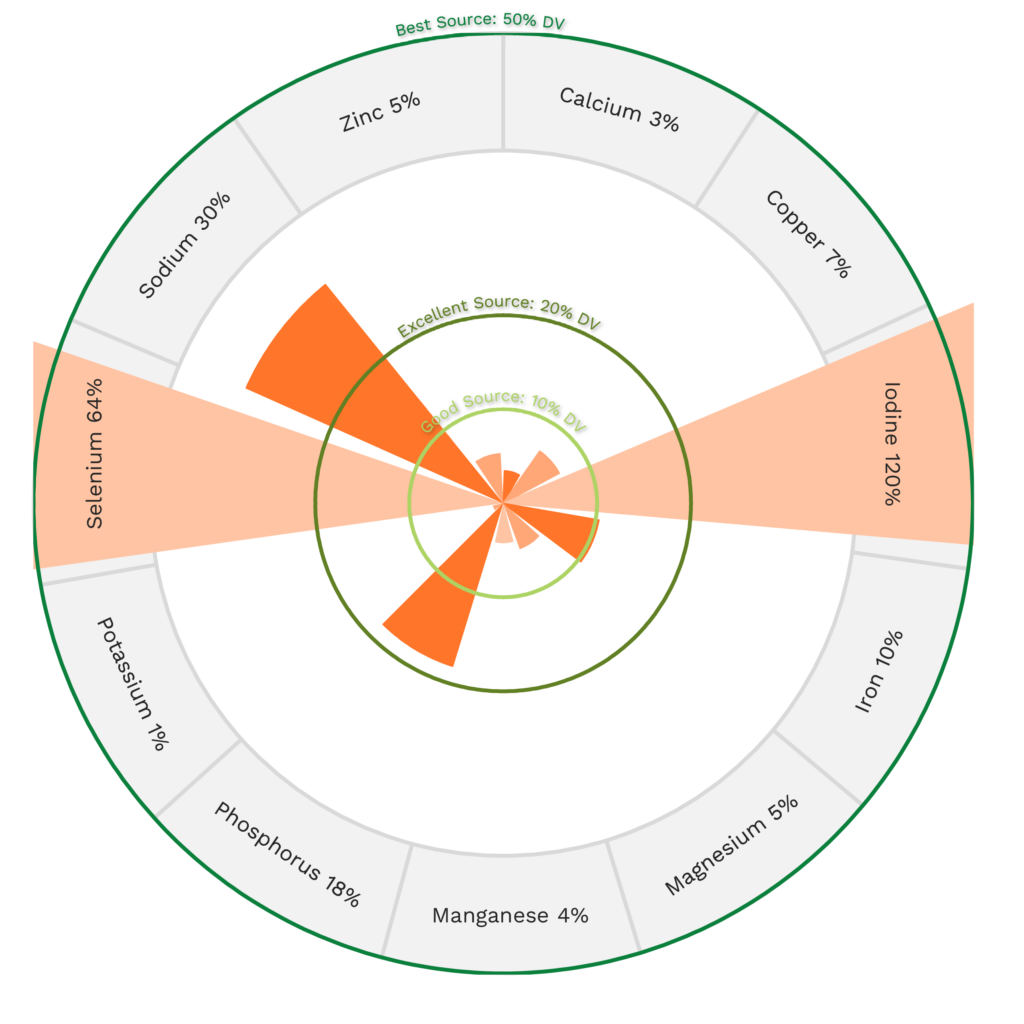
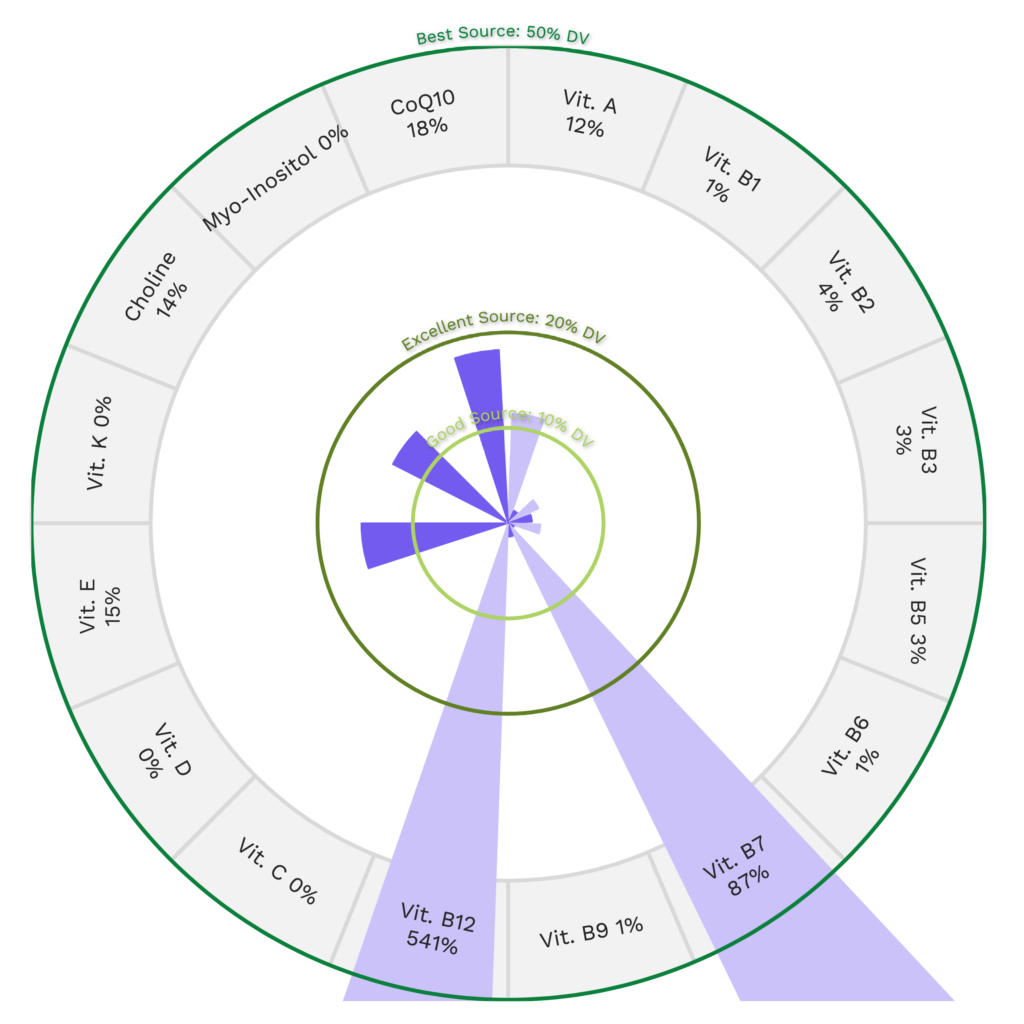
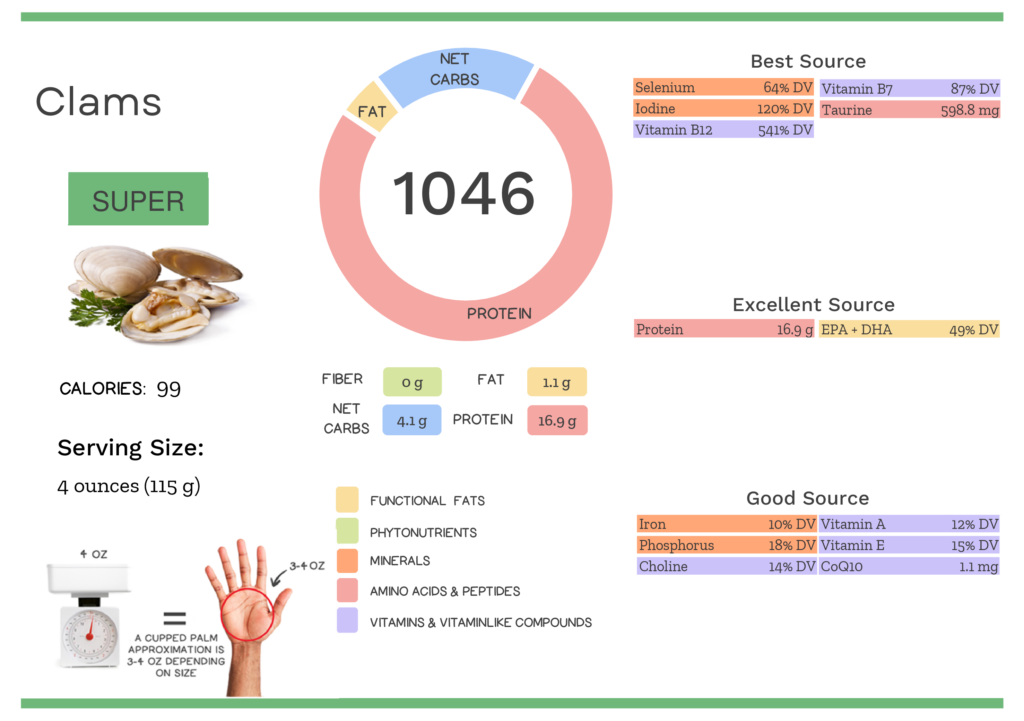

Quality Meat and Seafood
- 100% grass fed and finished beef, pasture-raised pork, pasture-raised chicken and wild-caught seafood
- Raised on regenerative family farms in the USA
- Fast delivery from our farms to your door
- Save 20% off for life, plus $15 off your first box, no coupon required
Clam Nutrition Varies With Cooking and Processing
The Nutrivore Score of clams varies depending on the method of preparation and processing. For instance, canned clams are conveniently available year-round and are less expensive than fresh clams.
| NUTRIVORE SCORE | |
|---|---|
| Clams, mixed species, canned, drained solids | 1055 |
| Clams, mixed species, canned, liquid | 14,744 |
| Clams, mixed species, cooked, moist heat | 3480 |
| Clams, mixed species, raw | 1046 |
Are you “shellebrating” all the nutrition in clams? Maybe your friends will too!
Health Benefits of Clam Nutrients
Let’s take a closer look at all of the best and excellent source of nutrients found in a 4-ounce serving of clams and see how they benefit our health.
Clams Provide 541% DV Vitamin B12 (Cobalamin)
Clams are a phenomenal source of vitamin B12 (cobalamin), providing an astounding 541% of the daily value per 4-ounce serving!
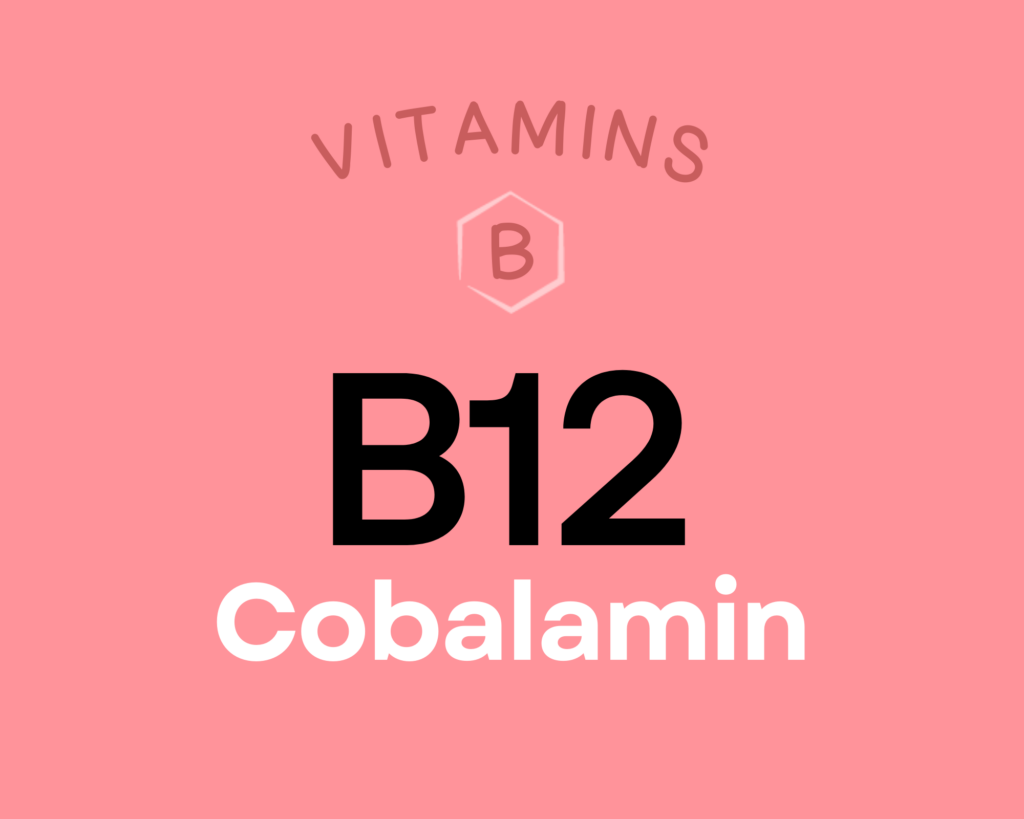
Vitamin B12 (cobalamin) is a water-soluble vitamin that serves as a cofactor for enzymes involved in energy metabolism, red blood cell production, DNA synthesis, neurotransmitter production, nervous system health, and folate metabolism. As a result of these roles, vitamin B12 is vital for maintaining brain and nervous system health, and may have a protective effect against dementia, Alzheimer’s disease, and depression. There’s also some evidence vitamin B12 may be cancer-protective, possibly through supporting folate metabolism (which then assists in repairing DNA damage). Learn more about vitamin B12 here.
Clams Provide 598.8 mg of Taurine
Clams are an outstanding source of taurine, providing 598.8 mg of taurine per 4-ounce serving!

Taurine is a non-proteinogenic amino sulfonic acid that supports neurological development, serves as a major component of bile (which helps to digest fats), and plays a role in water and mineral regulation within the blood (including through membrane stabilization and calcium signaling). Taurine also regulates the immune system and serves as an important antioxidant, and it plays a role in cardiovascular function and the development of skeletal muscle.
Clams Provide 120% DV Iodine
Clams are a fantastic source of iodine, providing 120% of the daily value per 4-ounce serving!

Iodine is a trace mineral that serves as a structural component of thyroid hormones, giving it a major role in thyroid health and function. As a result, it’s involved in regulating metabolism, reproductive function, fatty acid release, carbohydrate absorption, growth, and development. Consuming adequate amounts is particularly important during pregnancy (for preventing complications like preeclampsia, preterm delivery, miscarriage, and stillbirth) and during childhood (where it supports central nervous system development). Untreated iodine deficiency can lead to goiter and hypothyroidism. Learn more about iodine here.
Clams Provide 87% DV Vitamin B7 (Biotin)
Clams are rich in vitamin B7 (biotin), providing 87% of the daily value per 4-ounce serving!
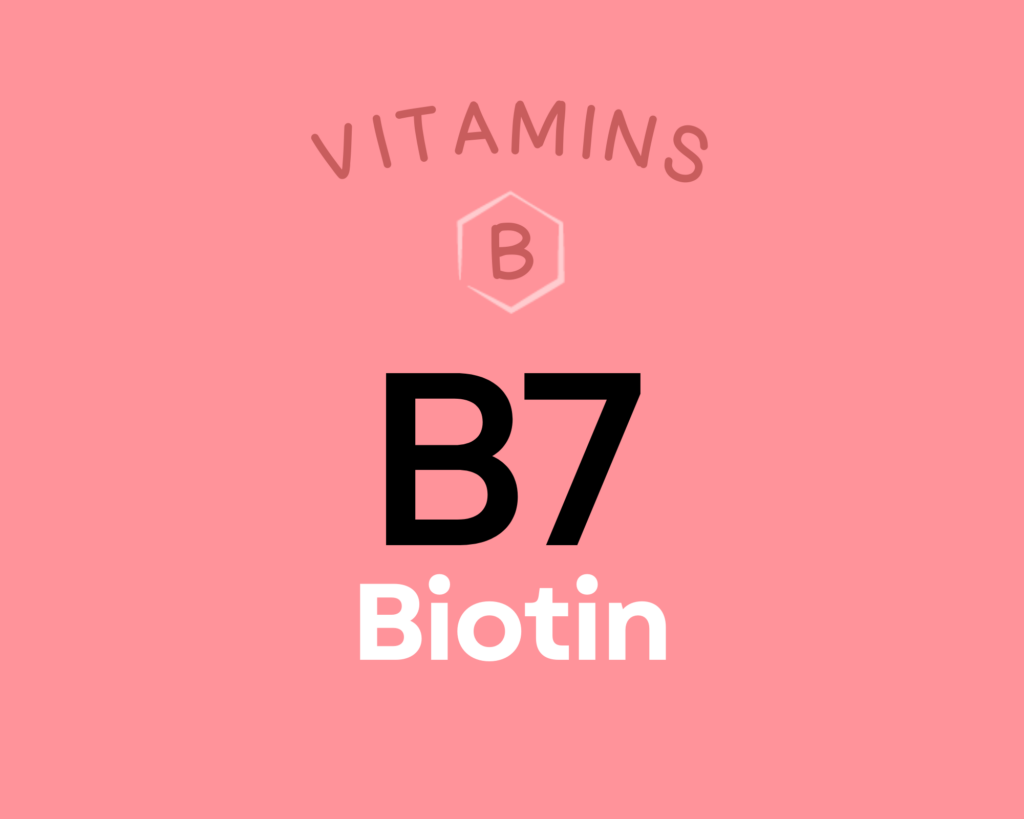
Biotin is a water-soluble B vitamin, also known as vitamin B7. Like other B vitamins, it plays an important role in energy metabolism (serving as a coenzyme for five carboxylase enzymes), neurotransmitter production, cellular function, and the function of various organs. Getting enough biotin can help support healthy nail and hair growth. It’s also particularly important during pregnancy, with low intakes increasing the risk of premature delivery and birth defects. There’s even some evidence biotin can benefit diabetics and reduce functional disabilities in people with multiple sclerosis. Learn more about biotin here.
Clams Provide 64% DV Selenium
This shellfish is a fabulous source of selenium, providing 64% of the daily value per 4-ounce serving!
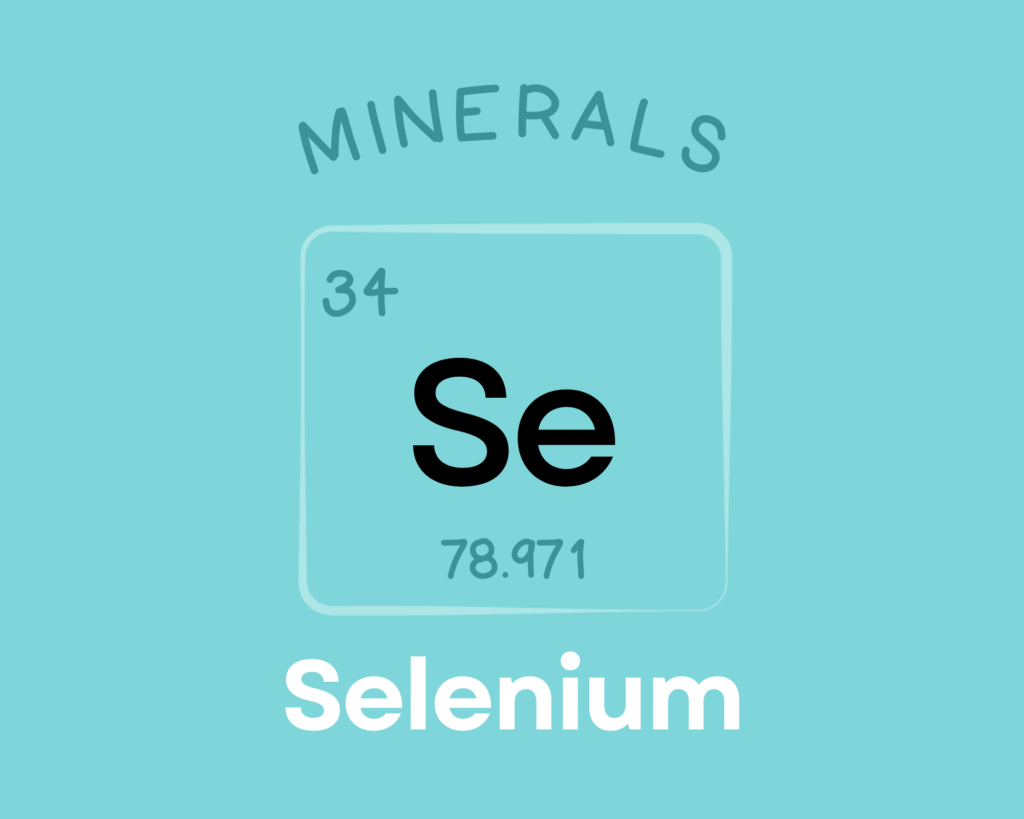
Selenium is a trace mineral needed by all mammals to sustain life. It serves as a component of the non-proteinogenic amino acids selenocysteine and selenomethionine, and also helps form over two dozen selenoproteins involved in reproduction, thyroid hormone metabolism, antioxidant defense, DNA synthesis, and immunity. Observational research suggests selenium could play a protective role against cancer, heart disease, asthma, and inflammatory bowel disease, although human trials have generally been lacking or contradictory. There’s also evidence that selenium can play a preventative role in asthma and inflammatory bowel disease, while also reducing mortality in patients with sepsis. Learn more about selenium here.
Clams Provide 49% DV EPA+DHA
Clams are an excellent source of EPA+DHA, providing 49% of the daily value per 4-ounce serving!
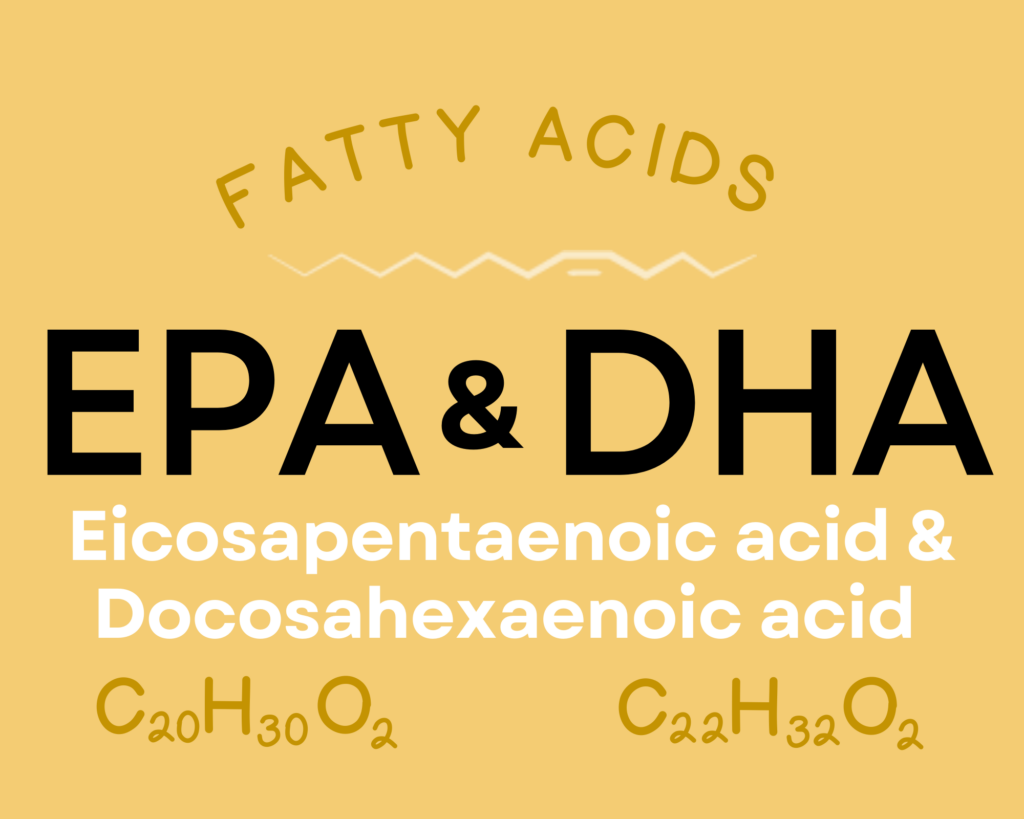
Eicosapentaenoic acid (EPA) and docosahexaenoic acid (DHA) are long-chain omega-3 fats that play important roles in neurological health, immune function, eye health and vision, inflammation, pain signaling, gut health, fetal development, and some aspects of cardiovascular health (like triglyceride levels and blood clotting). They exert many of their effects by helping form chemical messengers called prostaglandins, thromboxanes, and leukotrienes. EPA and DHA also serve as a structural component of the cell membrane, influencing important properties such as membrane fluidity and permeability. Small amounts of them can be synthesized from a shorter-chain omega-3 fat, alpha-linolenic acid (ALA). Learn more about EPA and DHA here.
Clams Provide 16.9 g of Protein
Clams are also an excellent source of protein, containing 16.9 g of protein per 4-ounce serving!
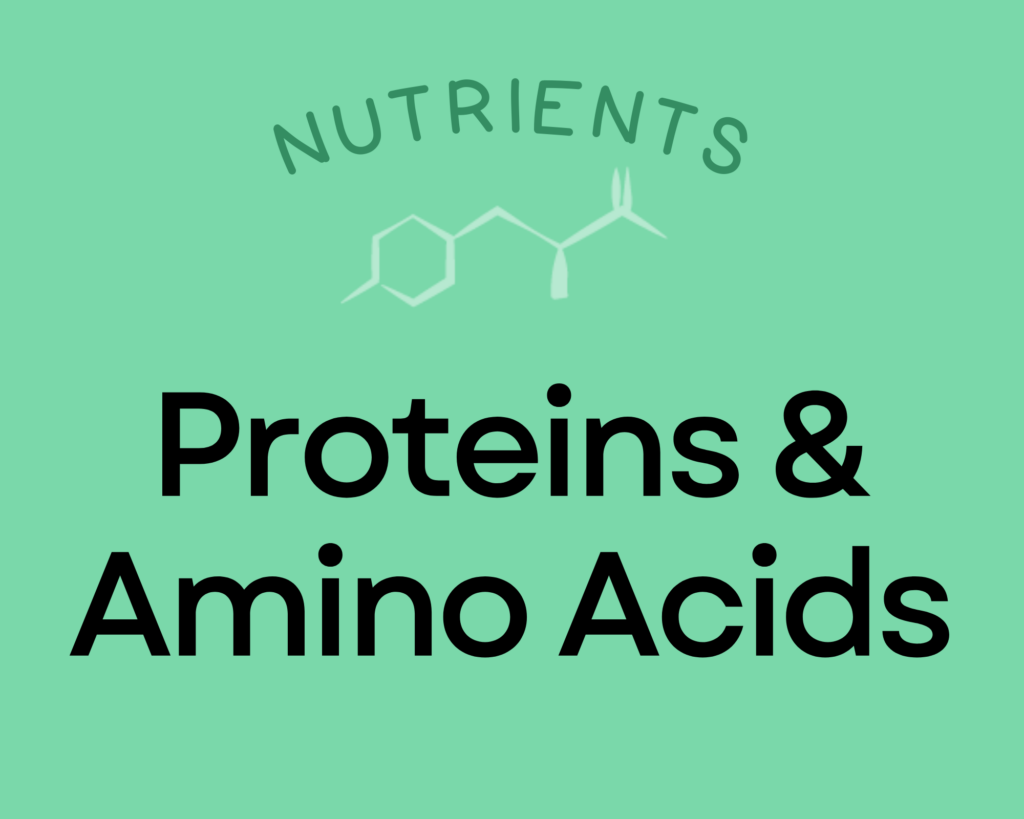
Proteins are the molecules that actually perform most of the various functions of life. In addition to being major structural components of cells and tissues, they have incredibly diverse roles from driving chemical reactions (e.g., enzymes) to signaling (e.g., some types of hormones) to transporting and storing nutrients. Dietary protein is necessary to supply the amino acid building blocks for all of the proteins in our bodies. The recommended daily allowance of protein is 0.36 grams per pound body weight (0.8 grams per kilogram of body weight). That amounts to 56 grams for a 150-pound person. However, it’s important to emphasize that this number is considered a minimum daily allotment, and there is no established upper limit. In fact, many studies have evaluated diets containing three to four times more protein than this minimum and proven benefits to weight management, body composition, hormone regulation, and cardiovascular health. These studies suggest that an optimal protein intake for most people is probably in the range of 1.2 to 1.8 grams per kilogram bodyweight (82 to 122 grams for that same 150-pound person), and that people who are very active may see the best results at even higher intake. Learn more about protein and amino acids here.
Learn What Foods Are the Best Sources of Every Nutrient

The Top 25 Foods for Every Nutrient
The Top 25 Foods for Every Nutrient e-book is a well-organized, easy-to-use, grocery store-friendly guide to help you choose foods that fit your needs of 43 important nutrients while creating a balanced nutrient-dense diet.
Get two “Top 25” food lists for each nutrient, plus you’ll find RDA charts for everyone, informative visuals, fun facts, serving sizes and the 58 foods that are Nutrient Super Stars!
Buy now for instant digital access.
How Much Clams Should We Eat Per Day?
Shellfish, especially bivalves, are nutrient dynamos which can even rival liver in terms of nutrient density!
Fish and shellfish are not only nutrient-dense sources of highly-digestible gut-friendly complete protein and the best food sources of the very important long-chain omega-3 fatty acids, DHA and EPA, but they’re outstanding sources of important nutrients in which we are commonly deficient. Eating seafood reduces risk of cardiovascular disease, type 2 diabetes, obesity and some forms of cancer.
Shellfish are extremely rich sources of vitamin B12, zinc, copper and selenium while also providing impressive amounts of vitamin A, vitamin C, vitamin D, iron, copper, calcium, phosphorus, potassium, magnesium, manganese, iodine and selenium. Shellfish also contain smaller but still notable amounts of vitamins B1, B2, B3, B5, B6, and B9, while also providing dozens of trace minerals.
In fact, every 100 grams per day of seafood decreases all-cause mortality by 7%. And, every 20 grams per day of fish decreases cardiovascular disease mortality by 4%. Aim to eat three or more servings of seafood weekly (and up to every meal!). Learn more about seafood here.
Clams are excellent for nerve and blood cell health, treating or preventing iron-deficiency anemia, protecting against cellular damage, forming connective tissue and sex hormones, and supporting carbohydrate and fat metabolism. It’s always best to mix up the foods you eat day to day (aiming for a wide variety of different fish and shellfish throughout the week), and clams definitely have a place at the table.
Easily track your servings of Nutrivore Foundational Foods!

The Nutrivore Weekly Serving Matrix
The Nutrivore Weekly Serving Matrix digital resource is an easy-to-use and flexible weekly checklist designed to help you maximize nutrient-density and meet serving suggestions of Nutrivore foundational foods, all without having to weigh or measure your foods!
Includes a 22-page instructional guide and downloadable interactive guides.
Buy now for instant digital access.
Citations
Expand to see all scientific references for this article.
Chin SF, Liu W, Storkson J, Ha Y, Pariza M. Dietary sources of conjugated dienoic isomers of linoleic acid, a newly recognized class of anticarcinogens. Journal of Food Composition and Analysis. 1992 Sept(5):185-197. DOI:10.1016/0889-1575(92)90037-K
Clements RS Jr, Darnell B. Myo-inositol content of common foods: development of a high-myo-inositol diet. Am J Clin Nutr. 1980 Sep;33(9):1954-67. doi: 10.1093/ajcn/33.9.1954. PMID: 7416064.
Pravst I, Zmitek K, Zmitek J. Coenzyme Q10 contents in foods and fortification strategies. Crit Rev Food Sci Nutr. 2010 Apr;50(4):269-80. doi: 10.1080/10408390902773037. PMID: 20301015.
USDA Food Central Database: Mollusks, clam, mixed species, raw
Watanabe T, Kioka M, Fukushima A, Morimoto M, Sawamura H. Biotin content table of select foods and biotin intake in Japanese. Int J Anal Bio-Sci. 2014. Vol 2(4):109-125.
World Health Organization, Regional Office for Europe, 2018. Scientific update on the iodine content of Portuguese foods.
Wójcik OP, Koenig KL, Zeleniuch-Jacquotte A, Costa M, Chen Y. The potential protective effects of taurine on coronary heart disease. Atherosclerosis. 2010 Jan;208(1):19-25. doi: 10.1016/j.atherosclerosis.2009.06.002. Epub 2009 Jun 11. PMID: 19592001; PMCID: PMC2813349.


